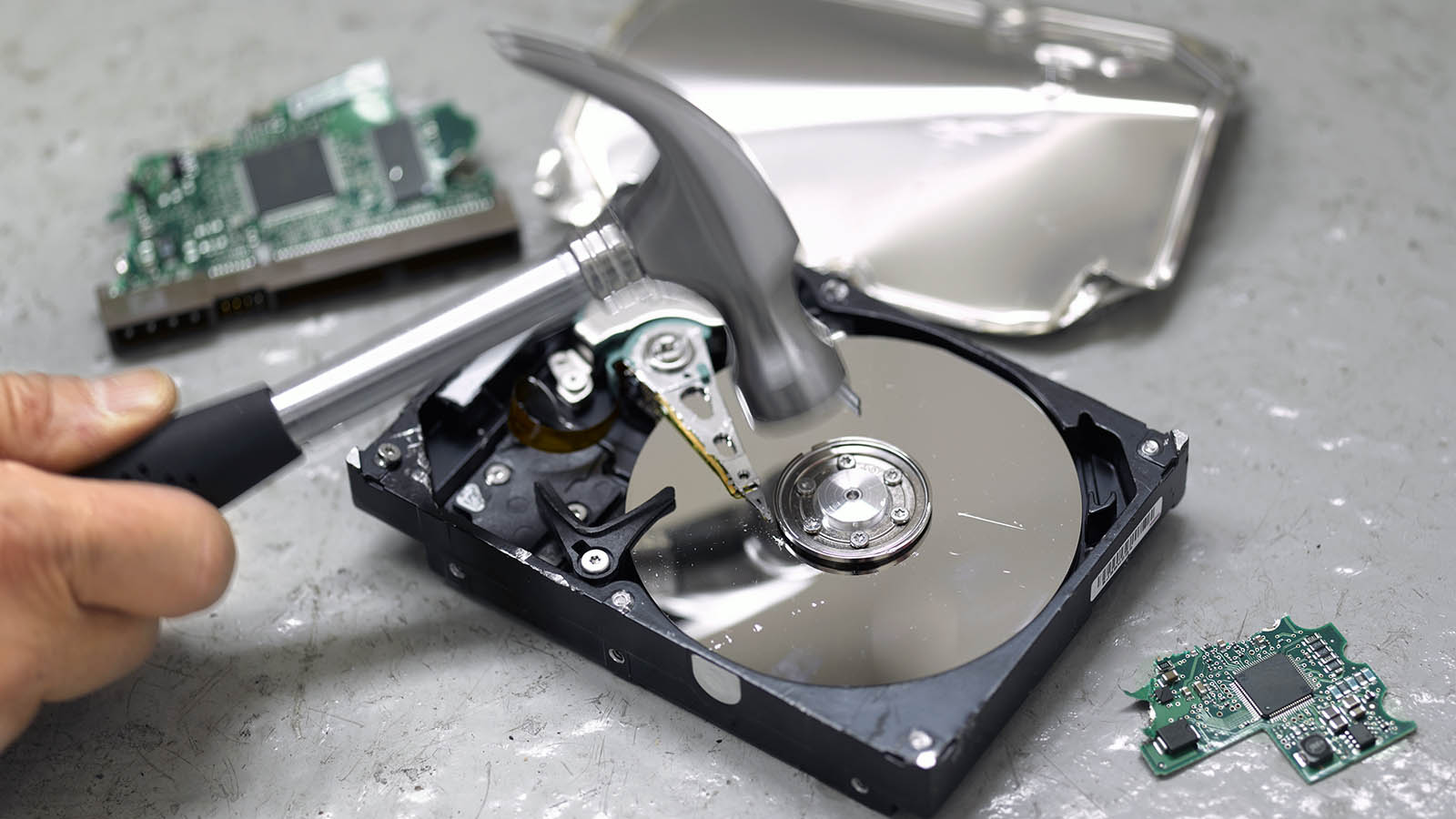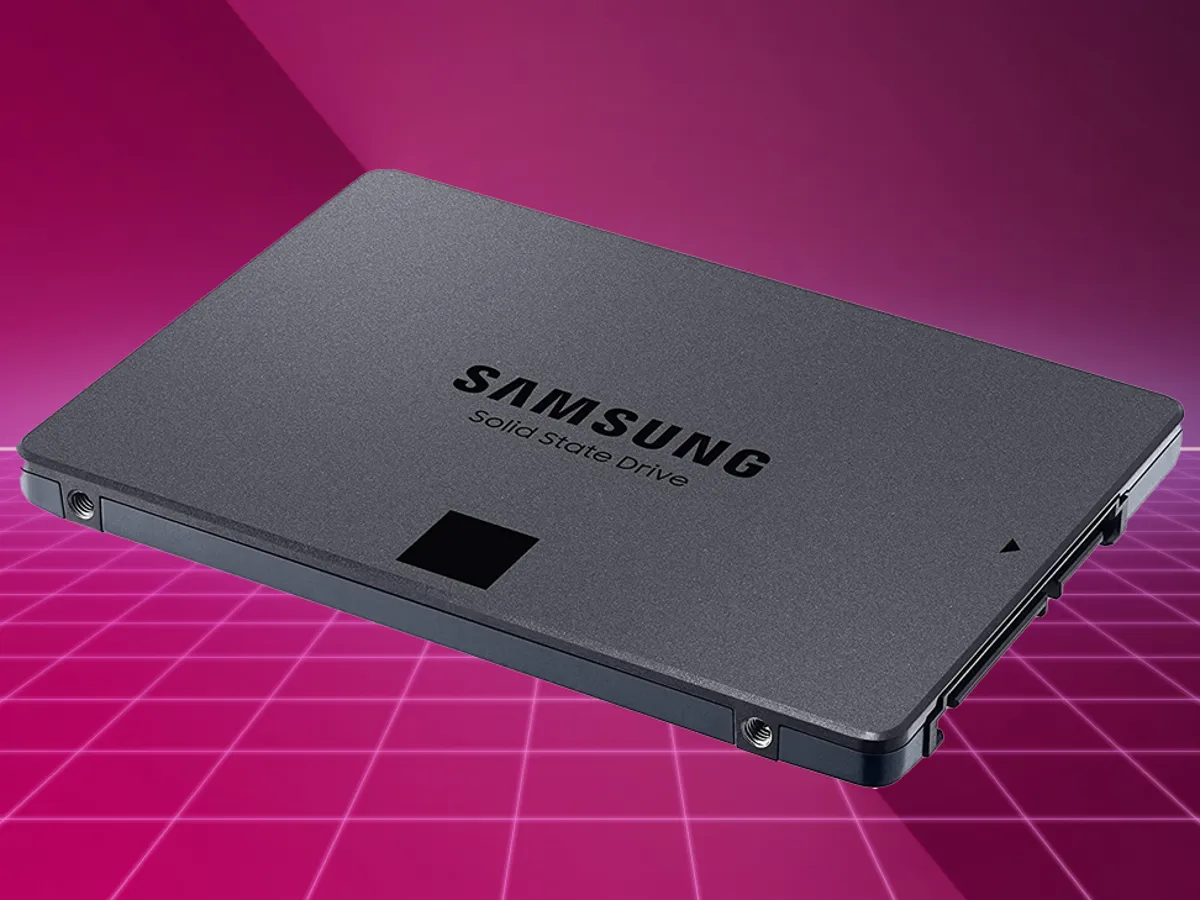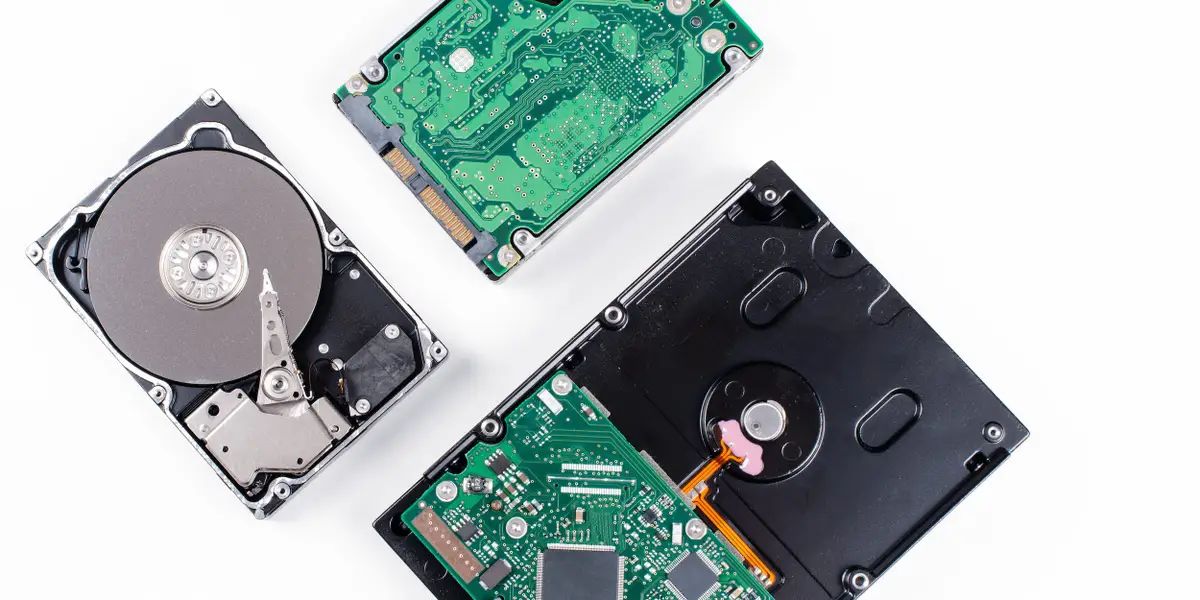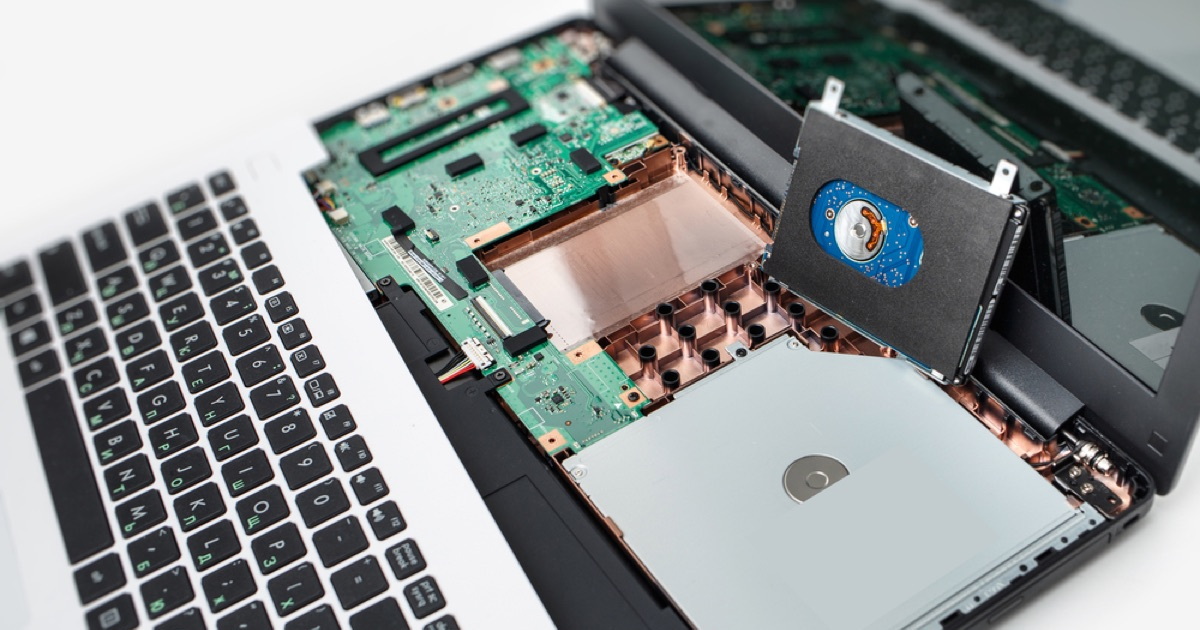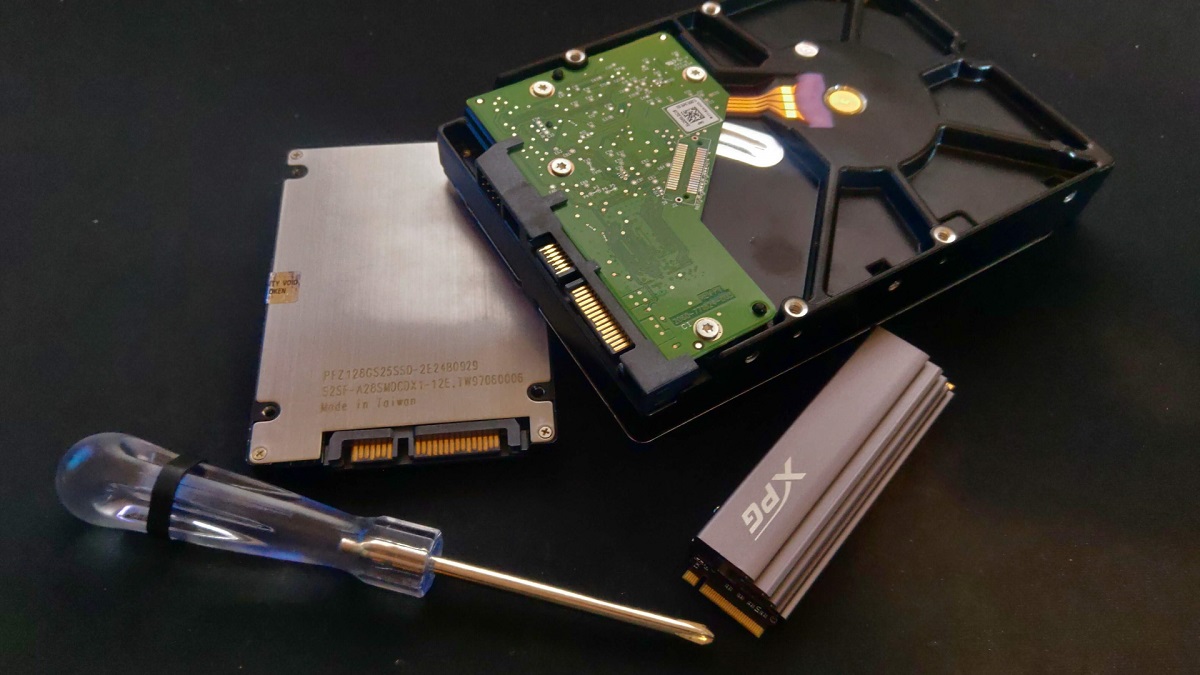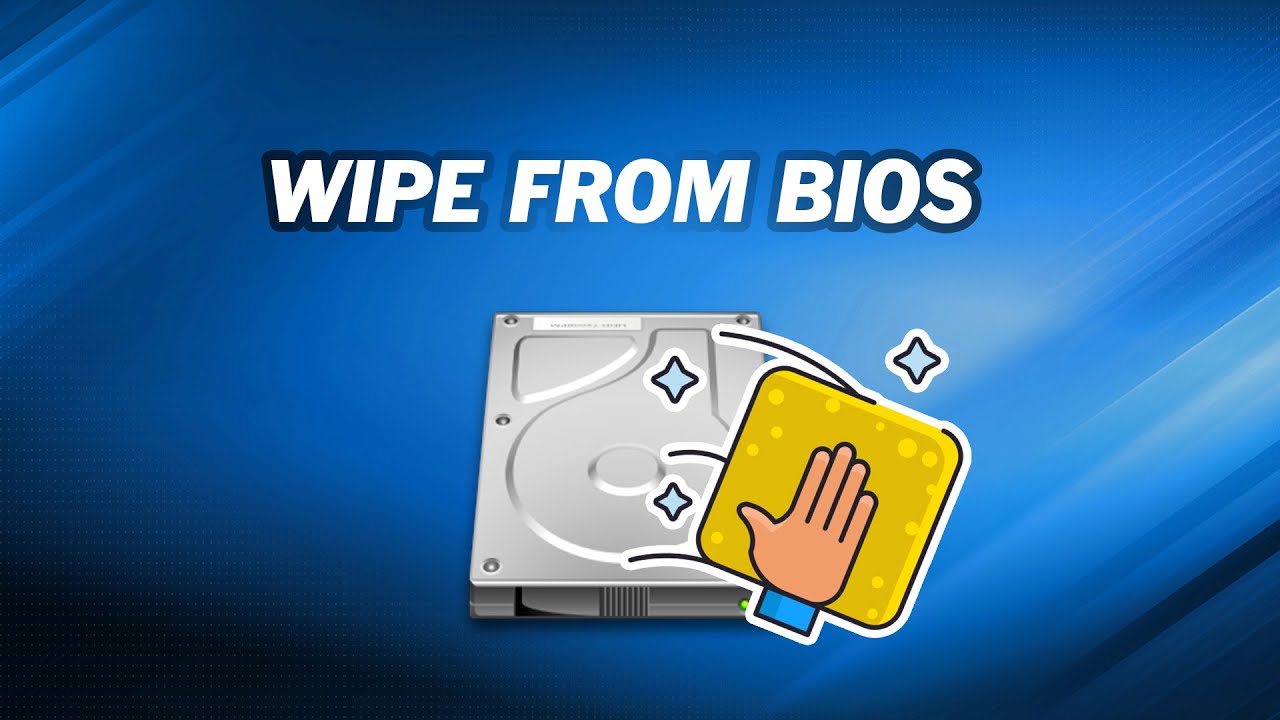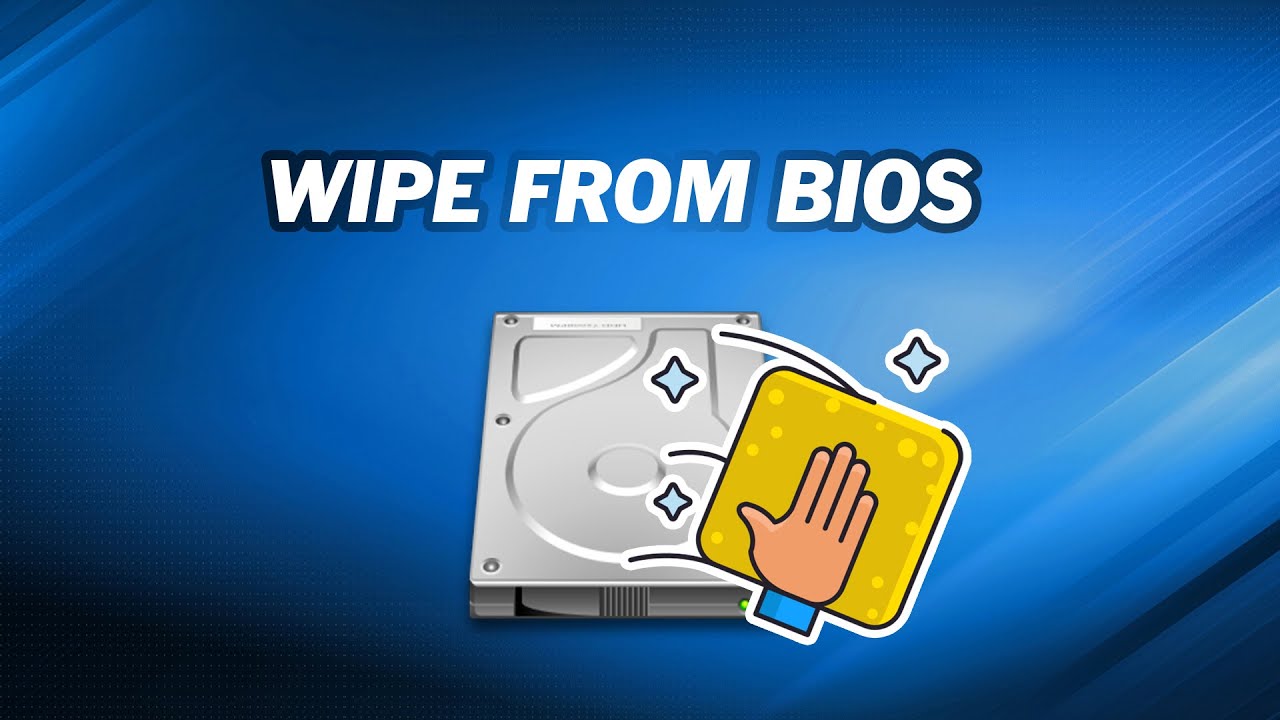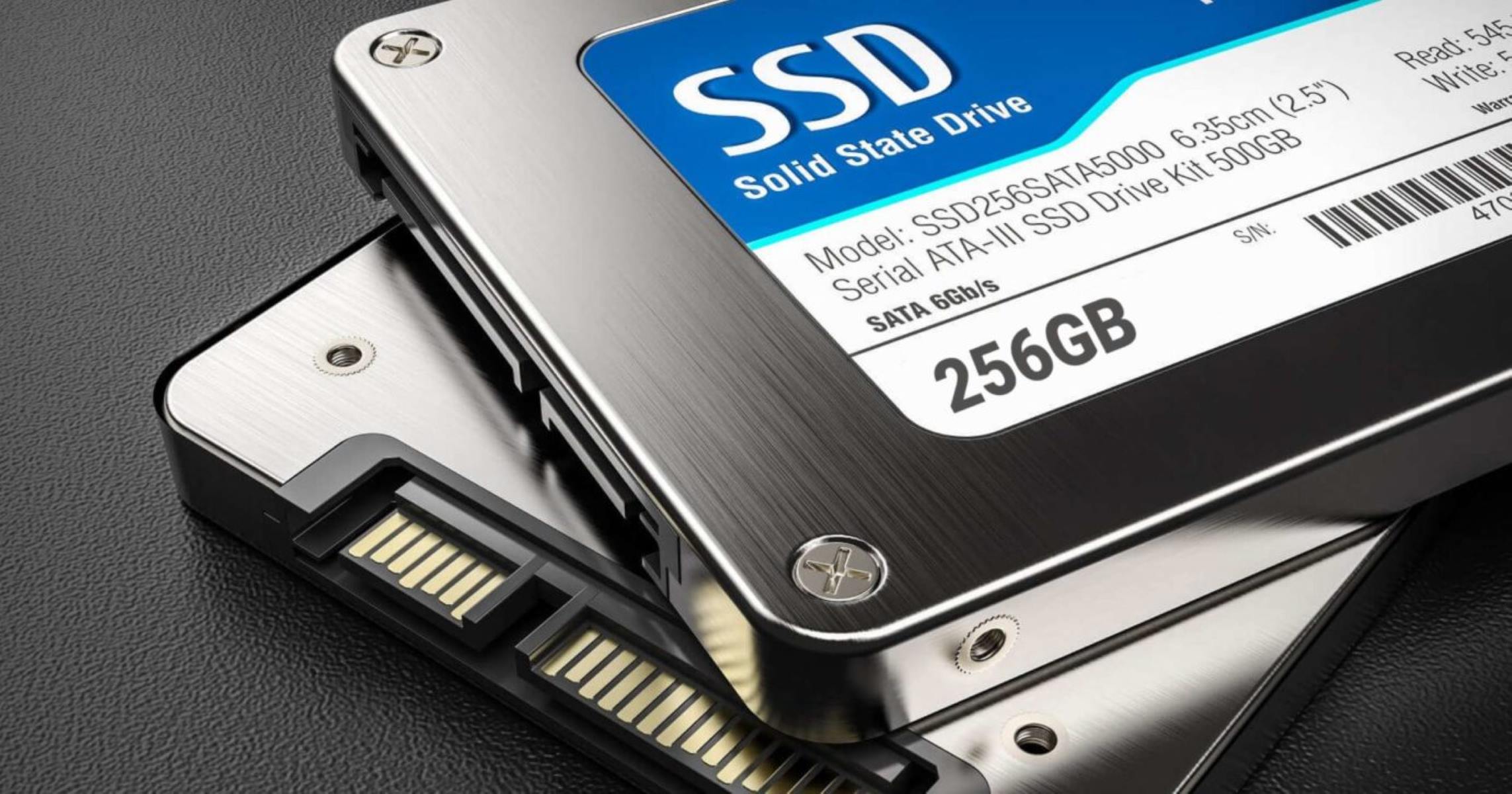Introduction
A solid-state drive (SSD) is a type of storage device that uses integrated circuit assemblies to store data persistently, unlike traditional mechanical hard disk drives (HDD) that rely on spinning platters. SSDs provide faster data access, improved reliability, and better energy efficiency. As with any storage device, there may come a time when you need to wipe your SSD to securely erase all the data stored on it.
Wiping your SSD ensures that your personal or sensitive information cannot be accessed or recovered by unauthorized individuals. Whether you plan to sell or donate your SSD, or if you simply want to start fresh with a clean slate, it is crucial to properly wipe your SSD to protect your data and maintain your privacy.
In this article, we will explore different methods to wipe your solid-state drive effectively. We will discuss the importance of backing up your data before the wipe, how to disconnect your SSD, and various methods such as using Disk Part or a dedicated SSD wiping utility. We will also explore the option of physical destruction for those seeking an extreme and irreversible method of data removal.
It is important to note that the process of wiping an SSD is different from wiping a traditional HDD due to the underlying technology and wear-leveling algorithms used in SSDs. Therefore, it is essential to follow the correct procedures to ensure a thorough and secure wipe of your SSD.
Before proceeding with any of the methods discussed, it is recommended to thoroughly read the manufacturer’s documentation or seek professional advice to ensure compatibility and proper execution of the wiping process.
What is a Solid State Drive (SSD)?
A solid-state drive (SSD) is a type of storage device that has become increasingly popular in recent years. Unlike traditional hard disk drives (HDD), which use spinning platters and mechanical components to store data, SSDs are comprised of integrated circuit assemblies.
SSDs rely on flash memory to store data, allowing for faster access times and increased durability compared to HDDs. Flash memory is a type of non-volatile storage, meaning it does not require power to retain stored information. This makes SSDs more suitable for portable devices like laptops and tablets, as well as desktop computers.
One of the key advantages of SSDs is their speed. Since they do not rely on mechanical parts, SSDs can read and write data much faster than HDDs. This results in faster boot times, quicker file transfers, and improved overall system responsiveness. The speed of an SSD can greatly enhance the performance of a computer, allowing for faster application loading times and smoother multitasking.
Additionally, SSDs are known for their reliability. Without any moving parts, there is less risk of damage or failure due to physical shocks or vibrations. This durability makes SSDs an ideal choice for portable devices that are frequently transported or used in rugged environments.
SSDs also offer improved energy efficiency compared to HDDs. Since they require less power to operate, they contribute to longer battery life in laptops and other mobile devices. This energy efficiency not only benefits the user in terms of extended usage time but also reduces overall power consumption, leading to lower electricity costs and a smaller carbon footprint.
It’s important to note that SSDs come in different form factors, including 2.5-inch drives for desktop and laptop computers, as well as M.2 and PCIe variants commonly used in laptops and gaming systems. The capacity of SSDs can vary greatly, ranging from a few hundred gigabytes to several terabytes, allowing users to choose the storage size that best suits their needs.
Overall, the solid-state drive technology represents a significant advancement in storage capabilities, providing faster speeds, enhanced durability, improved energy efficiency, and increased reliability compared to traditional hard disk drives. As the technology continues to evolve, SSDs are becoming more prevalent and affordable, making them a popular choice for computer users seeking to maximize their system’s performance and storage capabilities.
Why would you want to wipe your SSD?
There are several reasons why you might want to wipe your solid-state drive (SSD). Regardless of whether you are planning to sell or donate your SSD, or if you simply want to start fresh with a clean slate, securely wiping your SSD is essential to protect your personal data and maintain your privacy. Here are some specific scenarios where you may want to consider wiping your SSD:
1. Security and Data Privacy: When you decide to sell or give away your SSD, you need to ensure that none of your personal or sensitive information remains on the drive. Wiping the SSD will render the data unrecoverable by unauthorized individuals, protecting you from potential identity theft or data breaches.
2. System Rejuvenation: Over time, your SSD can accumulate residual data, temporary files, and other digital clutter that may impact its performance. By wiping the SSD and starting fresh, you can reclaim storage space and potentially improve the overall speed and responsiveness of your system.
3. Malware or Virus Removal: In the unfortunate event that your SSD becomes infected with malware or viruses that cannot be effectively removed, wiping the drive and reinstalling your operating system can be an effective solution to eradicate the malicious software.
4. Operating System Upgrade or Change: If you are planning to upgrade your operating system or switch to a different one, it is recommended to perform a clean installation on a wiped SSD. This ensures a fresh start and minimizes the risk of compatibility issues or data conflicts.
5. Storage Optimization: If you have partitioned your SSD into multiple drives or have used it for various purposes, wiping the drive allows you to reorganize your data and optimize its storage layout for better efficiency.
6. Compliance with Data Protection Regulations: In certain industries, such as healthcare or finance, businesses are required to comply with strict data protection and privacy regulations. If you are handling sensitive or confidential data and need to ensure compliance, securely wiping your SSD is a crucial step.
Regardless of the reason for wiping your SSD, it is essential to follow the proper procedures and use reliable methods to ensure a thorough and secure erasure of the data. Keep in mind that simply deleting files or formatting the drive is not sufficient to protect your data from being recovered.
In the following sections, we will discuss various methods to effectively wipe your SSD while ensuring the highest level of data security.
Backup your data
Before proceeding with wiping your SSD, it is crucial to back up any important data that you want to keep. Wiping the drive will permanently erase all data, including operating system files, programs, and personal files. By creating a backup, you will have a copy of your data that can be restored to a new storage device or used to recover specific files.
There are several methods to back up your data, depending on your preferences and available resources:
1. External Storage Devices: External hard drives, USB flash drives, or network-attached storage (NAS) devices are common options for backing up data. Connect the external storage device to your computer and copy the files and folders you want to back up. Ensure that you have enough space on the external device to accommodate all the data you wish to preserve.
2. Cloud Storage Services: Cloud-based backup solutions offer convenient and secure options for backing up your data. There are various cloud storage providers available, such as Google Drive, Dropbox, or Microsoft OneDrive. These services allow you to upload your files to their servers and access them from anywhere with an internet connection. Choose a reputable cloud storage provider that offers adequate storage space for your needs.
3. Disk Imaging Software: Disk imaging software creates a complete image or snapshot of your SSD, including the operating system, applications, and user data. This method allows you to restore your entire system to a previous state if needed. Popular disk imaging software includes Acronis True Image, Clonezilla, and Macrium Reflect.
Before choosing a backup method, consider the size of your data, the frequency of updates, and the level of convenience you require. It is advisable to have multiple backup copies stored in different locations or mediums to ensure redundancy and protect against data loss in case of hardware failure or unforeseen circumstances.
Once you have successfully backed up your data and confirmed that the backup is complete and accessible, you can proceed with the SSD wiping process, knowing that your important files are safely stored.
In the next sections, we will explore different methods to wipe your SSD effectively, ensuring your data is permanently erased and your privacy protected.
Disconnect your SSD
Before attempting to wipe your solid-state drive (SSD), it is important to disconnect it properly from your computer to ensure a clean and uninterrupted wiping process. Disconnecting the SSD will prevent any accidental data writes or interference while performing the wipe. Here are the steps to disconnect your SSD:
1. Shut down your computer: Begin by shutting down your computer completely. This will ensure that the SSD is not actively being accessed by any running processes and minimize the risk of data corruption or loss during disconnection.
2. Unplug the power cable: Once your computer is turned off, unplug the power cable from the wall outlet or power strip. This eliminates the possibility of an electrical surge or accidental power-on during the disconnection process.
3. Open your computer case: If you are using a desktop computer, you will need to open the computer case to access the SSD. Remove the screws or latches on the case and gently slide off the side panel. Be cautious of any static electricity buildup and touch a grounded metal surface to discharge any static charge before proceeding.
4. Locate the SSD: Identify the SSD within your computer. It is typically connected to the motherboard via a SATA or NVMe connector. The SSD may be mounted in a drive bay or secured with screws or brackets. Take note of its physical location and how it is connected.
5. Disconnect the SSD: Carefully unplug the SATA or NVMe cable from the SSD, ensuring not to bend or damage any pins or connectors. If the SSD is secured with screws or brackets, remove them to free the drive from its mounting position.
6. Verify the disconnection: Double-check that the SSD is fully removed from the computer by visually inspecting the connectors and cables. Make sure there are no loose or dangling cables that could accidentally come into contact with the disconnected SSD or other components.
7. Close your computer case: Once you have confirmed the proper disconnection of the SSD, gently slide the side panel back onto the computer case, aligning it with the screw holes. Secure the case with screws or latches to ensure a snug fit.
By following these steps, you have successfully disconnected your SSD from your computer, preparing it for the wiping process. It is essential to handle the SSD with care and take necessary precautions to avoid any physical damage or static discharge. Now, you are ready to proceed with the chosen method of wiping your SSD, as we will discuss in the following sections.
Use Disk Part
Disk Part is a command-line utility in Windows that allows you to manage disk partitions and perform various operations, including wiping your solid-state drive (SSD). Using Disk Part to wipe your SSD is an effective method for securely erasing the data on the drive. Here’s how you can use Disk Part to wipe your SSD:
1. Open Command Prompt as an administrator: To access Disk Part, you need to open Command Prompt with administrative privileges. Press the Windows key, type “Command Prompt,” right-click on it, and select “Run as administrator.”
2. Launch Disk Part: In the Command Prompt window, type “diskpart” and press Enter. This will start the Disk Part utility.
3. List available disks: Type “list disk” and press Enter. Disk Part will display a list of all the disks connected to your computer, including the SSD you want to wipe. Take note of the disk number associated with your SSD.
4. Select the SSD: Type “select disk X” (replace X with the disk number of your SSD) and press Enter. This will specify the SSD as the active disk for subsequent operations.
5. Clean the SSD: Type “clean” and press Enter. This command will remove all partitions and data from the selected SSD. Please note that this action permanently erases all data on the SSD, so ensure that you have backed up any important files before proceeding.
6. Create new partitions (optional): If you want to repurpose the SSD and create new partitions, you can use the “create partition primary” command. This will create a new primary partition on the SSD, ready for formatting and use. However, if you wish to leave the SSD completely blank without any partitions, you can skip this step.
7. Exit Disk Part: Once you have completed the desired operations, type “exit” and press Enter. This will exit the Disk Part utility.
After following these steps, your SSD has been wiped using Disk Part. It is important to note that Disk Part does not perform a secure erase, which means that the data may still be recoverable using advanced data recovery techniques. However, for regular use and general purposes, Disk Part provides a sufficient level of wiping for most users.
If you require a more secure form of data erasure, such as when selling or disposing of the SSD, consider using specialized SSD wiping utilities or physical destruction methods, which we will discuss in the subsequent sections.
Use an SSD wiping utility
While Disk Part can effectively wipe your solid-state drive (SSD), using a dedicated SSD wiping utility offers a more comprehensive and secure solution. These utilities are specifically designed to securely erase the data on an SSD, ensuring that it cannot be recovered through conventional means. Here’s how you can use an SSD wiping utility:
1. Research and choose a reputable utility: There are numerous SSD wiping utilities available, both free and paid. Research different options to find one that meets your needs and has positive reviews regarding its effectiveness and user-friendliness. Some popular SSD wiping utilities include Secure Erase, Parted Magic, and DBAN (Darik’s Boot and Nuke).
2. Download and install the utility: Once you have chosen a utility, download it from the official website or a trusted source. Follow the provided instructions to install the utility on your computer. Ensure that you download the version compatible with your operating system.
3. Launch the utility: After installation, open the SSD wiping utility. Depending on the software you chose, it may require creating a bootable USB drive or launching it from within the operating system. Again, refer to the provided documentation or user guide for specific instructions.
4. Select the SSD for wiping: In the utility interface, choose the SSD you want to wipe. Double-check that you have selected the correct SSD to prevent accidental data loss on other drives. Most SSD wiping utilities will display the available drives and allow you to choose the target SSD.
5. Choose the wiping method: SSD wiping utilities offer different wiping methods, such as Secure Erase or multiple-pass algorithms. Select the method that suits your needs and preferences. Secure Erase, supported by many SSD manufacturers, is a recognized industry-standard method for secure data erasure.
6. Start the wiping process: Once you have selected the SSD and the wiping method, initiate the wiping process through the utility interface. The utility will perform the necessary actions to securely erase the data on the SSD, following the chosen wiping method.
7. Monitor the progress: Throughout the wiping process, the utility may display the progress or estimated time remaining. It is important to let the utility complete the entire process without interruptions to ensure a thorough and effective wipe.
8. Verify completion and exit the utility: After the wiping process is complete, the utility will typically display a completion message or status. Verify that the process has been successful, and then exit the utility according to the provided instructions.
Using an SSD wiping utility offers a higher level of assurance that your data is securely erased and cannot be recovered. These utilities employ advanced algorithms and techniques to overwrite the data on the SSD, ensuring that it is irretrievable.
However, it is important to note that the specific features and procedures may vary depending on the SSD wiping utility you choose. Always refer to the accompanying documentation or user guide for detailed instructions and recommendations.
In the next section, we will explore an alternative method for wiping your SSD—physical destruction—for those seeking an extreme and irreversible form of data removal.
Physical destruction
If you require the most extreme and irreversible form of data removal, physical destruction of your solid-state drive (SSD) is an option to consider. This method ensures that the data stored on the SSD is completely destroyed and irrecoverable. Here are some methods for physically destroying an SSD:
1. Shredding: One of the most effective ways to physically destroy an SSD is to use a specialized solid-state drive shredder. These machines can shred the SSD into small pieces, rendering the data unrecoverable. If you have access to a professional data destruction facility, they might offer shredding services for SSDs.
2. Drilling: Another method is to drill holes through the SSD. Using a power drill, create multiple holes in the SSD, making sure to penetrate through the flash storage chips and other components. This method not only damages the data storage area but also renders the SSD physically unusable.
3. Crushing: Physically crushing the SSD is another option. This can be done using heavy machinery or by applying significant force with a hammer or other heavy object. Make sure to target the flash storage chips and other critical components to ensure the destruction of the stored data.
4. Incineration: Incineration is a drastic method that involves subjecting the SSD to high heat by burning it in a controlled environment. This extreme method ensures that the SSD and its data are completely destroyed and reduced to ashes.
It is crucial to emphasize that physical destruction methods should only be used when you no longer need the SSD or when the data on the drive is highly sensitive and must be completely and irreversibly destroyed. These methods will render the SSD permanently unusable, so exercise caution and ensure you have backed up any necessary data before proceeding.
While physical destruction offers the highest degree of data destruction, it is worth noting that it may not be suitable for all individuals or situations. Depending on your needs, legal requirements, or environmental considerations, other methods such as secure erasure using dedicated wiping utilities may be more appropriate.
Remember to dispose of the physically destroyed SSD responsibly. Local electronic recycling centers or professional e-waste disposal services can guide you on how to safely and responsibly dispose of the damaged SSD.
In the next section, we will conclude our exploration of SSD wiping methods and provide a summary of the key points discussed.
Conclusion
Wiping your solid-state drive (SSD) is crucial for protecting your data and maintaining your privacy, whether you’re selling or donating the drive or simply starting fresh. In this article, we explored various methods for effectively wiping an SSD.
We began by understanding the basics of SSDs, including their faster performance, improved reliability, and energy efficiency compared to traditional hard disk drives (HDD). We then delved into the reasons why you may want to wipe your SSD, such as ensuring data security, system rejuvenation, malware removal, or compliance with data protection regulations.
Before proceeding with any wiping method, we emphasized the importance of backing up your data to prevent any accidental loss. We discussed different backup options, including external storage devices, cloud storage services, and disk imaging software.
We then walked through the steps to disconnect your SSD properly from your computer to ensure an uninterrupted wiping process. By following these steps, you can minimize the risk of accidental data writes or interference during the wipe.
We explored two primary methods for wiping an SSD: using Disk Part and utilizing dedicated SSD wiping utilities. Disk Part, a command-line utility in Windows, provides a basic method for wiping SSDs. However, using an SSD wiping utility offers a more comprehensive and secure solution, allowing for more thorough data erasure.
For those seeking an extreme level of data destruction, we discussed the option of physical destruction. Shredding, drilling, crushing, or incineration are all methods that render the SSD and its data completely irrecoverable. Physical destruction should only be considered when there is no need for the SSD or when highly sensitive data must be destroyed beyond any possibility of recovery.
Ultimately, the method you choose to wipe your SSD depends on your specific needs, security requirements, and environmental considerations. Ensure you follow the proper procedures and choose a method that aligns with your goals.
Remember to dispose of SSDs responsibly, especially when physical destruction is involved. E-waste recycling centers or specialized services can guide you on how to properly dispose of damaged SSDs in an environmentally friendly manner.
In conclusion, wiping your SSD is essential for protecting your data and maintaining your privacy. By following the methods discussed in this article, you can confidently wipe your SSD effectively and securely. Safeguard your information, start fresh, and ensure that your sensitive data remains confidential.







